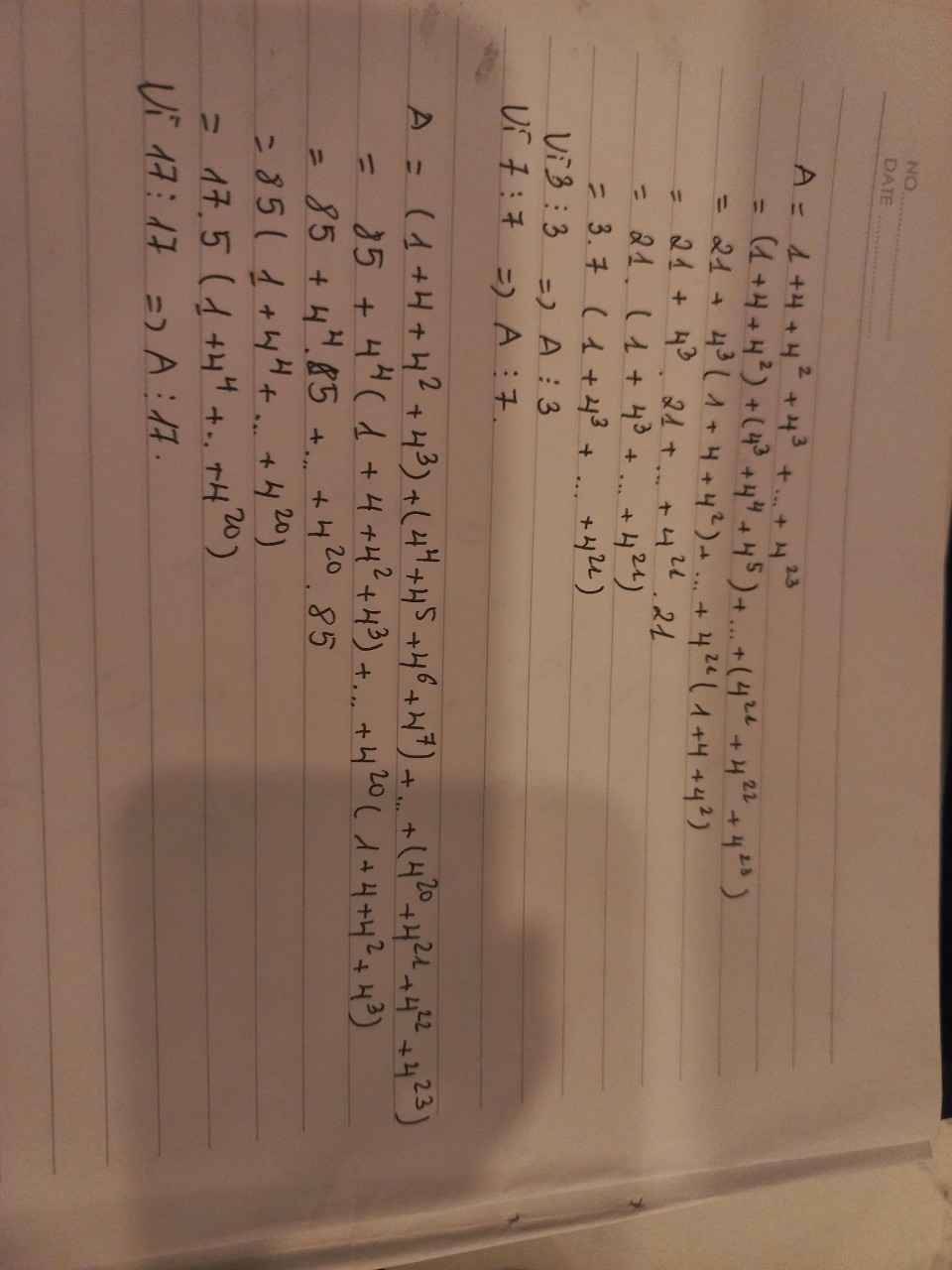
Hãy nhập câu hỏi của bạn vào đây, nếu là tài khoản VIP, bạn sẽ được ưu tiên trả lời.


ta có: \(2x-1=2\left(x-3\right)+5\)
để \(2x-1⋮x-3\Rightarrow2\left(x-3\right)+5⋮x-3\\ m\text{à }x.nguy\text{ê}n\Rightarrow x-3nguy\text{ê}n\\ \Rightarrow x-3\in\text{Ư}\left(5\right)=\left\{-5;5;1;-1\right\}\)
ta có bảng sau :
| x-3 | -5 | 5 | -1 | 1 |
| x | -2 | 2 | 4 | 8 |
\(\Leftrightarrow2.\left(x-3\right)+5⋮x-3\)
\(do2.\left(x-3\right)⋮x-3\)
\(\Leftrightarrow5⋮x-3\)
\(\Leftrightarrow x-3\inƯ\left(5\right)=\left\{-5;-1;1;5\right\}\)
\(\Leftrightarrow x\in\left\{-2;2;4;8\right\}\)

\(\Leftrightarrow x+3\in\left\{1;-1;3;-3;7;-7;21;-21\right\}\)
hay \(x\in\left\{-2;-4;0;-6;4;-10;18;-24\right\}\)

Bài 1:
$5a+8b\vdots 3$
$\Leftrightarrow 5a+8b-3(2b+2a)\vdots 3$
$\Leftrightarrow 5a+8b-6b-6a\vdots 3$
$\Leftrightarrow 2b-a\vdots 3$
Ta có đpcm.
Bài 2. Bổ sung thêm điều kiện $n$ là số tự nhiên.
Ta có: $A=n(2n+7)(7n+7)=7n(2n+7)(n+1)$
Vì $n,n+1$ là 2 số tự nhiên liên tiếp nên sẽ tồn tại 1 số chẵn và 1 số lẻ
$\Rightarrow n(n+1)\vdots 2$
$\Rightarrow A=7n(n+1)(2n+7)\vdots 2(1)$
Mặt khác:
Nếu $n\vdots 3$ thì $A=7n(n+1)(2n+7)\vdots 3$
Nếu $n$ chia $3$ dư $1$ thì $2n+7$ chia hết cho $3$
$\Rightarrow A\vdots 3$
Nếu $n$ chia $3$ dư $2$ thì $n+1$ chia hết cho $3$
$\Rightarrow A\vdots 3$
Tóm lại $A\vdots 3(2)$
Từ $(1);(2)$ mà $(2,3)=1$ nên $A\vdots (2.3)$ hay $A\vdots 6$

Bài 2
x chia hết cho 12; 21; 28 => x ∈ BC(12;21;28)
12 = 22.3 ; 21 = 3.7; 28 = 22.7 => BCNN (12;21;28) = 22.3,7 = 84
=> x ∈ {0;84; 168; 252; 336;...}
Vì 150 < x < 300 nên x = 168 hoặc x = 252
